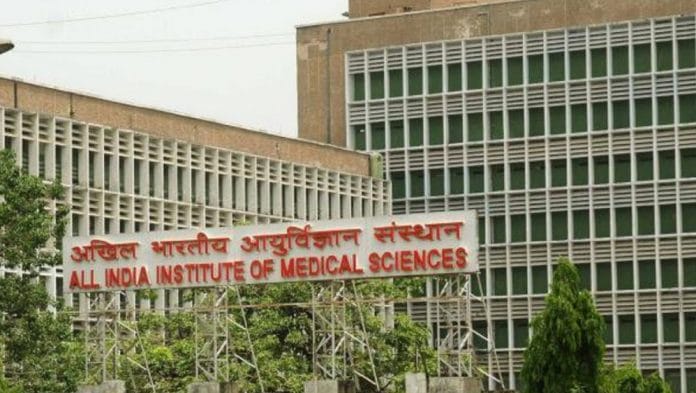The virtual bronchoscopy navigation system (VBNS), dubbed a ‘sophisticated global positioning system’, helps with a minute examination of the lungs.
New Delhi: The All India Institute of Medical Sciences (AIIMS) has installed a ‘GPS’ for the early detection and treatment of lung cancer amid a surge in cases.
The virtual bronchoscopy navigation system (VBNS), dubbed a “sophisticated global positioning system” (GPS), helps with a minute examination of the lungs, thus allowing quick detection of cancer. An early diagnosis can vastly improve a patient’s chances of survival.
AIIMS is the first hospital in India to use the system, which is reportedly only in use in China, Singapore, the US and Europe. The system has been installed at the hospital’s department of pulmonary medicine and sleep disorders.
“It is a sophisticated GPS which allows the lungs and their periphery to be been seen like a map,” Dr Anant Mohan, a professor in the department, told ThePrint, “Arrows show the doctors what part of the lung to visit, exactly the way you navigate through Google Maps.”
VBNS consists of a trolley-mounted machine, whose software is stored in a CD. “After the software is loaded, the map-type image of the lung appears digitally on the screen,” Dr Mohan said, adding that it takes just 30 minutes for each patient to undergo the complete investigation.
The number of lung cancer cases is on a rise across India, as ThePrint reported earlier this month. Specialists say increasing numbers of non-smokers, often young, are being diagnosed with the disease.
At AIIMS, the number of lung cancer cases reported has more than doubled from 940 in 2013-14 to 2,082 in 2015-16, coinciding with a time of increased air pollution in Delhi. AIIMS detects eight to 10 cases of lung cancer every week, Dr Mohan said.
Against this backdrop, AIIMS doctors had visited China to assess the efficacy of the VBNS, and the decision to get a VBNS machine for AIIMS was taken after much discussion, Dr Mohan said.
In two days, the system was used to make a diagnosis for four suspected patients of lung cancer. “Our doctors performed it while a team from China, including a doctor and technician, supervised them. We were satisfied with the results,” Dr Mohan added.
For the last three years, AIIMS has been using endobronchial ultrasound to detect lung cancer.
The introduction of VBNS is good news for many reasons.
“Endobronchial ultrasound is mainly for the detection of inner lesions. The lesion in the peripheral area, which is vast, is not visible,” Dr Mohan said.
If detected at an early stage, lung cancer has a five-year survival rate of 49 per cent, according to the American Cancer Society.
Earlier, since doctors were unable to examine lungs closely, cancers were usually detected in later stages, when the chances of survival are slim.
The new system is also helpful in “targeted therapy”, helping doctors target the exact affected area.
The VBNS is being provided free of charge. The Postgraduate Institute of Medical Education and Research, Chandigarh, will be the next to get it.






